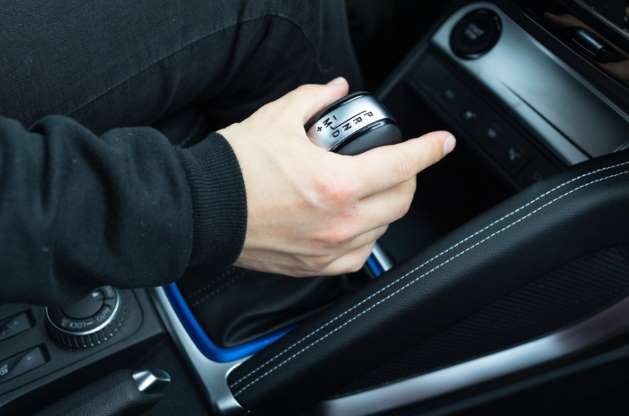A car’s transmission is its most complicated and essential system.
It is, therefore, important to take transmission system problems seriously.
Transmission slipping is one of the major problems.
Car transmissions that are slipping sometimes throw codes, and sometimes they don’t.
Several factors can cause it, including low fluid levels, sensor issues, and worn gear.
In this article, I have discussed the causes and solutions for transmission slipping.
Learn: Cause and Solution of Transmission No Forward or Reverse
Transmission slipping but no codes can be caused by 07 factors, including low fluid level, faulty TSS sensor, worn-out gears, faulty torque converter, etc.
Let’s talk about the cause and solution of slipping transmissions with no error codes.
01. Incorrect Fluid Level

A high or low fluid level is the most common cause of transmission slipping and other transmission problems.
Fluid is necessary for an automatic transmission to create enough hydraulic pressure to change gears.
If the fluid level is low, the transmission struggles to enforce enough hydraulic pressure, which makes gear changing difficult.
Also, leaking in the transmission system led to lower fluid levels.
Solution
Check the fluid level regularly.
If the level is low, refill the fluid, which is good in quality.
You can follow the owner’s manual for choosing the appropriate fluid.
Check the leaks in the transmission system; if you find any, close them.
02. Faulty TSS Sensor

Turbine Shaft Sensors (TSS) measure the shaft speed.
TSS sensors provide information about the transmission position to the Power Control Module (PCM).
A faulty TSS does not provide the PCM with the actual shifting timing.
As a result, the transmission slips.
Symptoms of a Bad TSS Sensor
- Misshifts
- The check engine light comes on
- Inability to engage cruise control
- Solution
Replace the faulty TSS sensor.
You will have to pay between $100 and $145, including labor.
Read more about: GMC Sierra 1500 transmission problems.
03. Worn Out Gear

As time passes, wear and tear accumulate on the vehicle gears, and eventually, the gears will wear out due to the accumulation of wear and tear.
Overheating or dirty fluid can also cause worn gears.
There are several problems caused by worn-out gears, including rigid gear engagement, no engagement of gears, slipping out of gears, and clunking.
Solution
Make sure the gearbox box is adequately lubricated by checking it regularly and changing the fluid.
Gears that are badly damaged should be replaced.
04. Dirty Transmission Filter
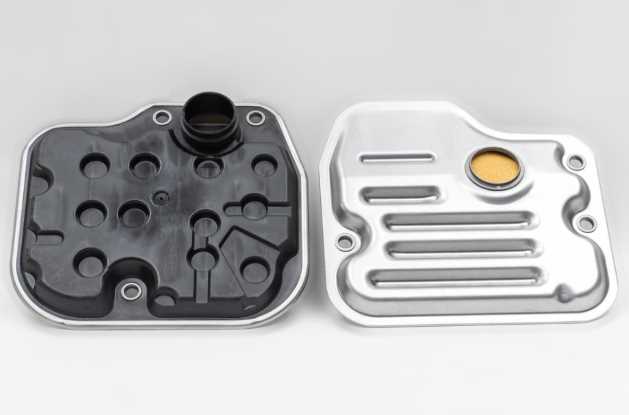
Due to contamination on the transmission filter, when it is dirty, the transmission is not properly lubricated, so the transmission will not work properly.
In some cases, transmission fluid is blocked by a dirty or clogged transmission filter and fails to lubricate the transmission properly.
As a result, the transmission slips.
Solution
It is possible to resolve this issue by flushing the transmission filter.
It is better to flush than to make fundamental changes.
05. Faulty Transmission Band
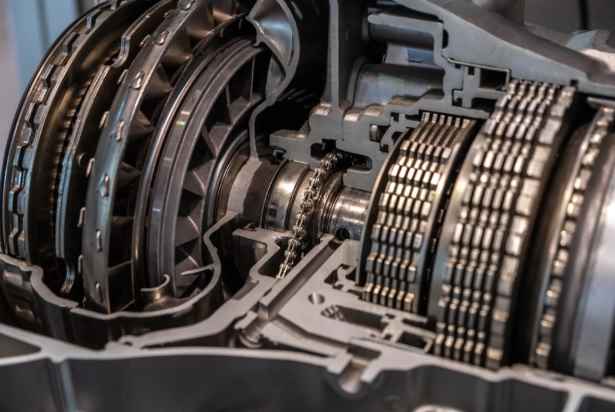
All automatic transmissions are connected by metal bands.
Overheating or wear and tear can cause the bands to wear out.
Wear or damage to the bands causes the gear to slip and fail to engage properly.
Solution
You can try adjusting the transmission band.
The best solution is to replace the bands.
Watch this video to learn how to adjust transmission band.
06. Solenoid Valve Problem
A solenoid is a small valve that plays a vital role in controlling transmission functions.
The valve regulates the flow of fluid beneath the transmission.
During a valve failure, the hydraulic pressure control is affected, and the transmission slips.
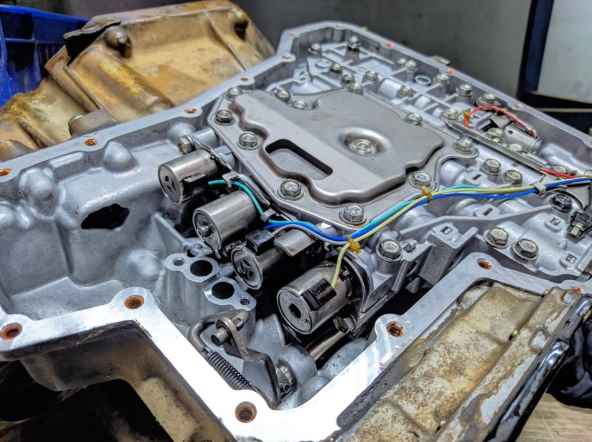
Solution
In order to identify which solenoid valve is malfunctioning, you can use an OBD2 scanner.
Identify and replace the faulty solenoid valve.
The cost of replacing a solenoid valve can range from $50 to $380, depending on the model and location.
07. Faulty Torque Converter
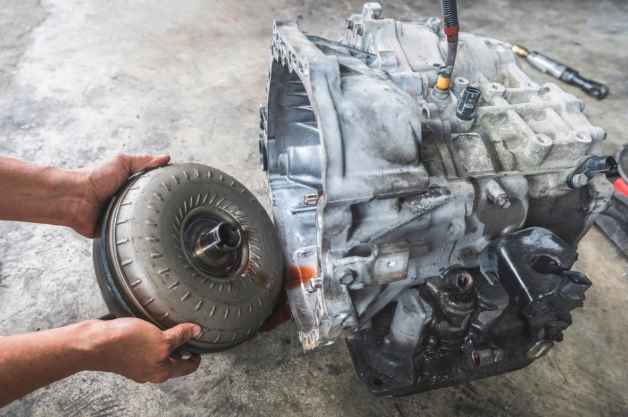
Torque converters transfer engine power to transmissions by using hydraulic pressure.
In the event of a torque converter failure, the transmission cannot change gears properly due to insufficient pressure.
Sometimes, you may experience shaking and shuddering in this situation.
Solution
You should take the vehicle to a repair shop for a proper diagnosis of the problem.
Does a Slipping Transmission Throw a Code?
Yes, you may get a P0720 or P0757 code when your transmission slips.
However, a few other codes related to transmission slipping are:
- P0700: Transmission control system malfunction
- P0730: Incorrect Gear ratio
- P0735: 5th gear incorrect ration
- P0734: 4th gear incorrect ratio
- P0732: 2nd gear incorrect ratio
In some cases, though, a code won’t appear when the transmission slips because the problem could be with a sensor or something else.
How Long Can You Drive a Car with a Slipping Transmission?
Having a slipping transmission directly affects your safety, so you should not drive with a slipping transmission.
Whenever you encounter a transmission problem, have it checked out by an experienced mechanic or at the dealership.
Otherwise, if you drive for a long time with a slipping transmission, you are likely to get into an accident.
How Do You Test If Your Transmission is Slipping?
There are some methods and signs that help test transmission for slipping.
If you experience the following issues, it means your transmission is slipping:
- Delay acceleration
- Unexpected RPM rate (over 3,000)
- Difficulty in switching gears.
- Check engine light illuminates.
- Burning smells.
- Unusual noises or vibrations when changing gear.
- Difficulty in reversing the vehicle.
Is it Expensive to Fix a Slipping Transmission?
It is a bit expensive to fix a slipping transmission.
Depending on the issues, you may have to spend between $400 and $1500.
Sometimes, the cost can rise up to $2650 in severe conditions.
How Do You Stop Transmission Slipping?
The following routine maintenance can prevent your transmission from slipping and extend its life:
- Regularly check the transmission fluid level and condition
- Avoid overloading
- Properly switch gears
- Parking brakes should always be used
- Check the whole transmission system, as recommended.
- Avoid overheating
- Wait for the vehicle to warm up properly
What are the Signs of a Clogged Transmission Filter?
A clogged transmission filter sign is almost similar to a faulty transmission.
However, some signs specifically indicate that the transmission fluid filter is clogged.
Here are the signs:
- Unusual rattle
- Fluid leaking
- Difficulty in changing gears
- Burning smell
- Whines
- Noise neutral
FAQs
Can a Slipping Transmission Be Saved?
Yes, regular maintenance, replacing faulty parts, and changing the fluids within recommended intervals can save the slipping transmission.
Will check engine light come on for slipping transmission?
Yes, the check engine light will come on for slipping transmission.
The Engine Control Module (ECM) controls the whole system and makes sure that the whole system works perfectly.
When the ECM detects transmission slipping, it turns on the warning light.
What are signs transmission going out?
The following 10 symptoms appear when the transmission goes out:
- Slipping gears
- Slow or no start
- Transmission fluid leaks
- Unusual noise
- Burning smell
- Check the engine light
- Clutch drag
- Shaking or shuddering
- Won’t go into gear
- Noise when shifting gears
How can you tell if your transmission sensor is bad?
The following 05 signs can indicate that your transmission sensor is bad:
- Improper shifting
- Inability to move out of a parking space
- Check engine light pops up
- The transmission may shift into the wrong gear
- The car may be stuck in one gear
Why does my transmission slip when I accelerate?
When your gear wears out, your transmission may slip during acceleration.
Test the gears properly and follow the necessary steps.
Can a transmission flush Fix slipping?
Yes, a transmission flush fixes the slipping problems.
The transmission may slip when the fluid level is too low or too high.
Fluid issues and slipping problems can be resolved by flushing.
A professional mechanic should perform this task since flushing can be challenging at home.
Your vehicle’s transmission will perform better and last longer if you flush it every 28,000 to 38,000 miles.
You may only benefit from flushing your transmission if it is still not too old.
Learn also about Chevy Silverado transmission problems.
Final Thoughts
Transmission slippage does not mean your transmission has failed, but it indicates serious problems.
I have discussed the 07 most common reasons for your transmission to slip and their fixes.
You can solve your transmission slipping without reading any codes if you identify the problem and take the necessary steps.

